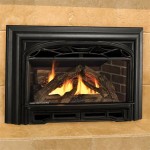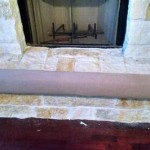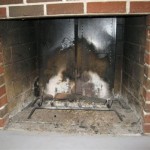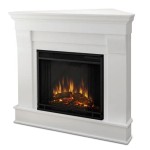Fireplace Design Ideas: Elevating Aesthetics with Stone Veneer
Fireplaces serve not only as functional heating elements but also as prominent architectural features within living spaces. The design of a fireplace significantly impacts the overall ambiance of a room, influencing its style and character. Stone veneer has emerged as a popular material choice for fireplace design, offering a versatile and visually appealing alternative to natural stone.
Stone veneer is a manufactured product designed to replicate the look and feel of natural stone. It is typically made from a lightweight concrete mix that is molded and colored to resemble various types of stone, such as fieldstone, ledgestone, and river rock. The relatively lightweight nature of stone veneer makes it easier to install and more cost-effective compare to using full-thickness natural stone. This characteristic extends its applicability to a wider range of fireplace structures and architectural settings.
The advantages of using stone veneer in fireplace design are numerous. Beyond its aesthetic appeal, which can range from rustic to contemporary, it offers practical benefits such as durability, ease of maintenance, and relatively low installation costs. Stone veneer is also fire-resistant, making it a safe choice for fireplace applications. Furthermore, its lightweight nature reduces the structural burden on the fireplace foundation, simplifying the construction process and potentially reducing construction costs.
Aesthetic Versatility of Stone Veneer
One of the primary reasons for the popularity of stone veneer in fireplace design is its exceptional aesthetic versatility. Stone veneer is available in a wide array of styles, colors, and textures, allowing homeowners and designers to achieve a diverse range of looks, seamlessly integrating the fireplace into various interior design schemes. The ability to mimic different types of natural stone precisely means that stone veneer can complement almost any architectural style, from traditional to modern.
For example, using a stacked stone veneer can create a rustic, farmhouse-style fireplace, evoking the charm of a traditional hearth. The rough texture and varying colors of the stacked stone contribute to a warm and inviting atmosphere. Alternatively, a sleek, linear ledgestone veneer can lend a contemporary edge to a fireplace design, offering a clean and sophisticated look. The uniform size and shape of the ledgestone create a minimalist aesthetic that perfectly suits modern interiors.
Color also plays a crucial role in the aesthetic impact of stone veneer. Neutral tones, such as grays, beiges, and creams, can create a timeless and elegant look that complements a wide range of color palettes. Darker shades, such as charcoal grays and blacks, can add drama and sophistication to a fireplace design, making it a striking focal point in the room. The availability of custom colors further enhances the versatility of stone veneer, allowing designers to match the fireplace to existing décor or create a unique color scheme.
Texture is another key element that contributes to the overall aesthetic appeal of stone veneer. Rough, textured surfaces can add depth and character to a fireplace, creating a tactile experience that invites touch. Smooth, polished surfaces, on the other hand, can lend a more refined and elegant look. The choice of texture depends on the desired aesthetic and the overall style of the room. Combining different textures can create visual interest and add a layer of sophistication to the fireplace design.
Furthermore, stone veneer can be used in conjunction with other materials to create visually stunning fireplace designs. Combining stone veneer with wood accents, such as a reclaimed wood mantel or a built-in bookshelf, can add warmth and character to the space. Integrating metal elements, such as a stainless steel firebox or a decorative metal screen, can create a modern and industrial-chic aesthetic. The possibilities are endless, limited only by the imagination of the designer.
Practical Considerations for Stone Veneer Fireplace Installation
While the aesthetic appeal of stone veneer is undeniable, it is essential to consider the practical aspects of installation and maintenance. Proper installation is crucial to ensure the longevity and performance of the stone veneer fireplace. While some homeowners may choose to tackle the installation as a DIY project, it is generally recommended to hire a qualified contractor with experience in stone veneer installation. The complexities involved in preparing the substrate, applying the mortar, and precisely placing the stones require skill and expertise.
The installation process typically involves preparing the substrate by ensuring it is clean, level, and structurally sound. A scratch coat of mortar is applied to the substrate to provide a bonding surface for the stone veneer. The stones are then carefully placed onto the mortar bed, ensuring proper alignment and spacing. Grout is applied between the stones to fill the gaps and create a cohesive look. The grout is then cleaned and sealed to protect it from moisture and stains.
Selecting the appropriate type of mortar is crucial for a successful installation. Different types of mortar are formulated for different types of stone veneer and different environmental conditions. Using the wrong type of mortar can lead to adhesion problems, cracking, and even failure of the installation. A qualified contractor can advise on the best type of mortar for a specific project.
Proper ventilation is also essential for a safe and efficient fireplace operation. The fireplace should be properly ventilated to allow for the free flow of air and to prevent the buildup of carbon monoxide. A qualified contractor can inspect the existing ventilation system and make recommendations for improvements if necessary.
Maintaining a stone veneer fireplace is relatively straightforward. Regular cleaning with a soft brush and mild detergent can help to remove dirt and grime. Avoid using harsh chemicals or abrasive cleaners, as these can damage the stone veneer. Periodically inspect the stone veneer for cracks or loose stones and repair them promptly to prevent further damage. Sealing the stone veneer can help to protect it from moisture and stains, extending its lifespan.
Cost-Effectiveness and Long-Term Value
Stone veneer offers a cost-effective alternative to natural stone, providing a similar aesthetic at a significantly lower price point. The lower cost of materials, combined with the ease of installation, makes stone veneer an attractive option for homeowners who are looking to enhance the look of their fireplace without breaking the bank. The lightweight nature of stone veneer also reduces the structural requirements of the fireplace, which can further reduce construction costs.
In addition to the initial cost savings, stone veneer offers long-term value through its durability and low maintenance requirements. Stone veneer is resistant to fading, cracking, and chipping, ensuring that the fireplace will retain its beauty for many years to come. The low maintenance requirements mean that homeowners can spend less time and money on upkeep, further enhancing the value of their investment.
The increased aesthetic appeal and perceived value of a home with a stone veneer fireplace can also contribute to its resale value. A well-designed and properly installed stone veneer fireplace can be a significant selling point, attracting potential buyers and increasing the overall marketability of the property. This makes stone veneer fireplace a worthwhile investment for homeowners who are looking to increase the value of their home.
Furthermore, the versatility of stone veneer allows homeowners to update the look of their fireplace without undertaking a major renovation. If the existing stone veneer becomes outdated or no longer suits the homeowner's taste, it can be replaced with a new style or color of stone veneer relatively easily. This flexibility allows homeowners to keep their fireplace looking fresh and modern without incurring significant expense.
The selection of stone veneer for fireplace designs requires thorough consideration of style, practicalities, and long-term value. By carefully weighing these factors, homeowners and designers can create stunning and functional fireplaces that serve as focal points within their living spaces.

The Timeless Elegance Of Stone Veneer For Modern Fireplace Design 27 Ideas

Natural Stacked Stone Veneer Fireplace Ideas

17 Stone Veneer Fireplace Designs Ideas Innovative Building Materials

Stone Veneer Fireplaces Natural Facing

Stone Veneer Interior Design Living Room Kitchen Bedroom Ideas More Buechel

7 Popular Stone Veneer Fireplace Design Trends Mason S Mark

Stone Veneer Fireplaces Natural Facing

Stone Veneer Fireplace Design Your Perfect Space

Natural Stacked Stone Veneer Fireplace Ideas

Stone Veneer Fireplace Ideas That Will Warm Up Your Home Ply Gem
Related Posts








